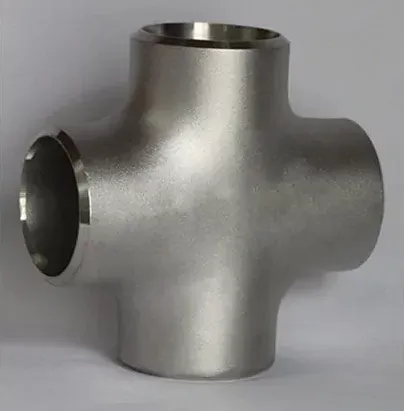-
Cangzhou Yulong Steel Co., Ltd.
-
Phone:
+86 13303177267 -
Email:
admin@ylsteelfittings.com
- English
- Arabic
- Italian
- Spanish
- Portuguese
- German
- kazakh
- Persian
- Greek
- French
- Russian
- Polish
- Thai
- Indonesian
- Vietnamese
- Zulu
- Korean
- Uzbek
- Hindi
- Serbian
- Malay
- Ukrainian
- Gujarati
- Haitian Creole
- hausa
- hawaiian
- Hebrew
- Miao
- Hungarian
- Icelandic
- igbo
- irish
- Japanese
- Javanese
- Kannada
- Khmer
- Rwandese
- Afrikaans
- Albanian
- Amharic
- Armenian
- Azerbaijani
- Basque
- Belarusian
- Bengali
- Bosnian
- Bulgarian
- Catalan
- Cebuano
- China
- China (Taiwan)
- Corsican
- Croatian
- Czech
- Danish
- Esperanto
- Estonian
- Finnish
- Frisian
- Galician
- Georgian
- Kurdish
- Kyrgyz
- Lao
- Latin
- Latvian
- Lithuanian
- Luxembourgish
- Macedonian
- Malgashi
- Malayalam
- Maltese
- Maori
- Marathi
- Mongolian
- Myanmar
- Nepali
- Norwegian
- Norwegian
- Occitan
- Pashto
- Dutch
- Punjabi
- Romanian
- Samoan
- Scottish Gaelic
- Sesotho
- Shona
- Sindhi
- Sinhala
- Slovak
- Slovenian
- Somali
- Sundanese
- Swahili
- Swedish
- Tagalog
- Tajik
- Tamil
- Tatar
- Telugu
- Turkish
- Turkmen
- Urdu
- Uighur
- Welsh
- Bantu
- Yiddish
- Yoruba

Nov . 24, 2024 18:24 Back to list
pipe fitting and welding
Pipe Fitting and Welding An Overview of Techniques and Applications
Pipe fitting and welding are essential skills in various industries, including construction, manufacturing, and oil and gas. They play a crucial role in ensuring the integrity and functionality of piping systems. This article aims to delve into the fundamentals of pipe fitting and welding, exploring the techniques employed and their various applications.
Understanding Pipe Fitting
Pipe fitting involves the assembly and installation of piping systems designed to convey liquids, gases, or solids. It requires a thorough understanding of pipe materials, dimensions, and the tools necessary for precise cutting, bending, and joining. Pipe fitters are responsible for interpreting technical drawings and blueprints to ensure the accurate configuration of pipes within a system.
Types of Pipe Fittings
Pipe fittings come in various shapes and sizes to accommodate different connections and configurations. Common types include
1. Elbows Used to change the direction of the pipe. 2. Tees Allow for branching the flow in multiple directions. 3. Reducers Connect pipes of different diameters. 4. Caps and Plugs Close the ends of pipes. 5. Flanges Facilitate easy access for maintenance and assembly.
Selecting the appropriate fittings is crucial for the efficiency and safety of the system being installed.
Welding in Pipe Systems
Welding is a method of joining materials, primarily metals, through the application of heat, pressure, or both. In the context of pipe fitting, welding is often used to create permanent joints that are strong and leak-proof.
Types of Welding Techniques
Several welding techniques are particularly relevant to pipe applications
1. Arc Welding Uses an electric arc to melt the base material and fill material, creating a strong joint. It includes sub-types like Shielded Metal Arc Welding (SMAW) and Gas Metal Arc Welding (GMAW).
pipe fitting and welding

2. TIG Welding (Tungsten Inert Gas) Offers high precision and is ideal for welding thin materials. It uses a non-consumable tungsten electrode to produce the weld.
3. MIG Welding (Metal Inert Gas) A faster and more automated process where a continuous wire feed acts as both the electrode and filler material.
4. Stick Welding Commonly used for outdoor applications, stick welding employs a consumable electrode covered in flux to create the weld.
Each of these techniques has its own set of benefits and ideal applications. For instance, TIG welding is often preferred for stainless steel pipes in food and pharmaceutical industries due to its clean and precise output.
Applications of Pipe Fitting and Welding
The applications of pipe fitting and welding are vast, spanning multiple sectors
1. Oil and Gas Industry Pipe fittings and welding are paramount for constructing pipelines that transport oil and gas over long distances. Safety and integrity are crucial in this sector to prevent leaks and environmental hazards.
2. Construction In building projects, piping systems for water supply, drainage, and HVAC installations rely heavily on skilled pipe fitting and welding to ensure reliable operation and compliance with building codes.
3. Manufacturing Many manufacturing processes require extensive piping systems for transporting materials or waste. The ability to fit and weld pipes correctly affects both the efficiency of the production process and the safety of the work environment.
4. Automotive and Aerospace High-performance vehicles and aircraft often use welded piping systems to handle fuel, air, and coolant. Precision welding ensures that these systems operate efficiently under extreme conditions.
Conclusion
Pipe fitting and welding are indispensable to modern infrastructure and industrial processes. Mastering these techniques requires a blend of technical knowledge, hands-on experience, and adherence to safety standards. As industries continue to evolve, innovations in pipe fitting and welding methods are likely to emerge, further enhancing their applications and efficiency. Whether in the oil fields, construction sites, or manufacturing facilities, the significance of skilled pipe fitters and welders remains paramount, ensuring that systems function safely and effectively.
Latest news
-
ANSI 150P SS304 SO FLANGE
NewsFeb.14,2025
-
ASTM A333GR6 STEEL PIPE
NewsJan.20,2025
-
ANSI B16.5 WELDING NECK FLANGE
NewsJan.15,2026
-
ANSI B16.5 SLIP-ON FLANGE
NewsApr.19,2024
-
SABS 1123 FLANGE
NewsJan.15,2025
-
DIN86044 PLATE FLANGE
NewsApr.19,2024
-
DIN2527 BLIND FLANGE
NewsApr.12,2024
-
JIS B2311 Butt-Welding Fittings LR/SR 45°/90° /180°Seamless/Weld
NewsApr.23,2024











